Which promos work? It’s the perpetual question of retailers, especially on third-party apps and sites where competition is fierce. Promos are big business – according to June 2024 data by SimplyCodes, 62% of US consumers search for and use promo codes, discounts, or coupons when making online purchases – and they can be costly if brands get it wrong. McKinsey has previously reported that 59% of consumer-packaged-goods companies lose money on promotions.

We also know that promos can make or break conversion, especially for customers deciding between multiple options. Our data on food-delivery orders in the US shows that the more restaurants a customer views, the more likely they are to use a promo – perhaps suggesting a promotion can act as an indecision aid when faced with choice overload.
An investigation into what makes a good food-delivery promo reveals some interesting patterns rooted in consumer psychology. Most restaurants rely heavily on Percentage Off Discounts (deals like “20% off, up to $25”), but our analysis shows they underperform despite their frequent use.
Conversely, Free Item promos (e.g.. “Free item on orders $15+”) result in the highest conversion, and Fixed Amount Discounts (e.g. “Save $5 on $20+”) generate the highest median spend.

These more successful promos share a few key traits:
Why don’t we see the same patterns with Buy 1 Get 1 Free offers? In theory, this type of promo ticks all these behavioural boxes. Perhaps the more modest performance shows us that food consumers value variety over quantity - I want a free side of guacamole, not a second burrito.
We can see all this play out in the approaches of some familiar QSRs on food-delivery apps. While all brands experiment with a variety of promo messages, those that lean more heavily into Free Item and Fixed-Amount Discounts tend to see greater uplifts in median order values. Subway, McDonald’s, Taco Bell, and Chipotle Mexican Grill, for example, all use these types of promos extensively (over 40% of their promotions). When comparing their overall promo performance, most of these brands see at least a 7% increase in order value when customers use promos. For example, McDonald’s customers typically spend $21 without promos but $23.60 with them – roughly a 12% uptick. (Starbucks is one notable exception to this pattern, perhaps due to different customer ordering patterns at coffee chains). Brands that rely more on other types of promos don’t see this same order-value boost.

That’s not to say there’s no value in the blanket Percentage Off and BOGOF strategies: despite their lower individual order values and conversion, the sheer volume of these promotions have the potential to result in substantial revenue en masse, even if they don’t tick the same behavioural-psychology boxes.

So, it’s really a tale of two strategies: volume vs. precision. What’s your approach, and do you have the data you need to get the most out of your promos?
Data and insights for this article were contributed by Kate Jacobs, Insight Analyst at RealityMine. Source: May-July 2025. MFour data.